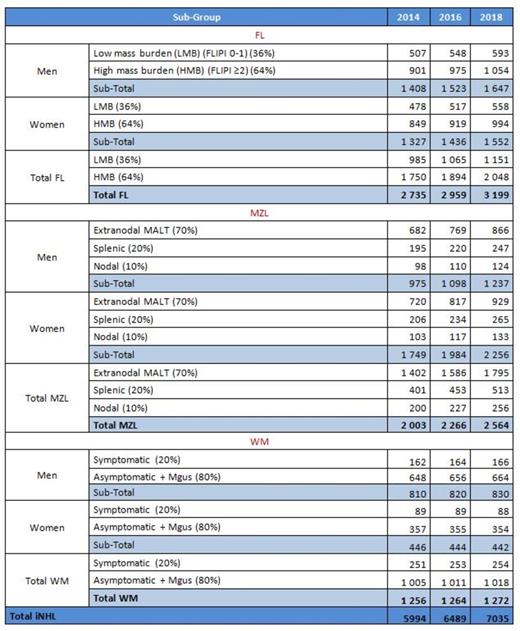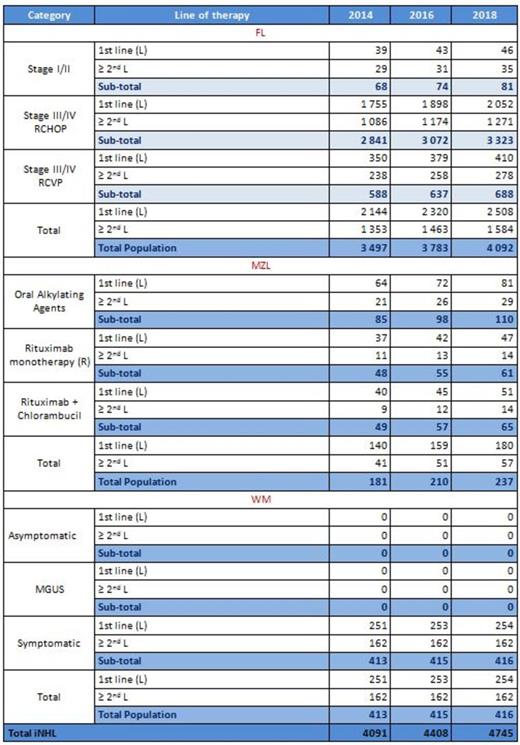Abstract
As of 2014, there were few reliable publication sources of epidemiology data for Non-Hodgkin Lymphoma (NHL) in France, particularly with regard to indolent forms such as Follicular Lymphoma (FL), Waldenström Macroglobulinemia (WM) and Marginal Zone Lymphoma (MZL). In addition, epidemiology registries provide useful data on disease incidence but no information can be directly obtained on the number of relapsed patients, especially in the rare iNHL subtypes. At the same time, many new and effective drugs will be made available to the Hematologist/Oncologist community. As a consequence, there will be an increase in the complexity of therapeutic algorithms.
We undertook an innovative modeling approach to address the need for a greater understanding of the number of relapsed patients available to these new therapies. The objective of the model was to determine the yearly incidence of first line and later lines of therapy patients from 2014 to 2018 and in consequence, provide relevant data to determine precisely which population might be in need for the new compounds and bring accurate data that could be implemented into a prospective economic model.
First, we used the Registre Régional des Hémopathies Malignes de Basse-Normandie (RRHMBN) to collect real world patient characteristics, such as patient subgroups and tumor staging. The RRHMBN is dedicated to Hematological malignancies and supported by official Health Authorities: Institut National du Cancer(INCA) and Institut National de Veille Sanitaire (INVS). Then, we applied these data to the French National Network of Registers FRANCIM incidence and survival data (table 1 below).
Finally, we applied the results from medical literature to progression free survival for each standard of care treatment in our epidemiological model.
The table below shows yearly the number of patients in need for treatment in first and subsequent lines of therapy as produced by our model.
Yearly number of patients in need for treatment in first and subsequent lines
Our modeling approach compensates for a lack of real world information on relapsed iNHL. We have shown that there is a significant number of relapsed patients who are in need of new treatments in France. The model is able to answer the question of how many patients are in need of novel therapies in later lines through 2018 and provide for iNHL investigators efficient prospective data that can be integrated into medico-economic model development.
Furthermore, these data address a current medical need for the development of a new iNHL algorithm, necessitated by the expected arrival of new treatment options for patients in the relapsed setting.
No relevant conflicts of interest to declare.
Author notes
Asterisk with author names denotes non-ASH members.



This feature is available to Subscribers Only
Sign In or Create an Account Close Modal